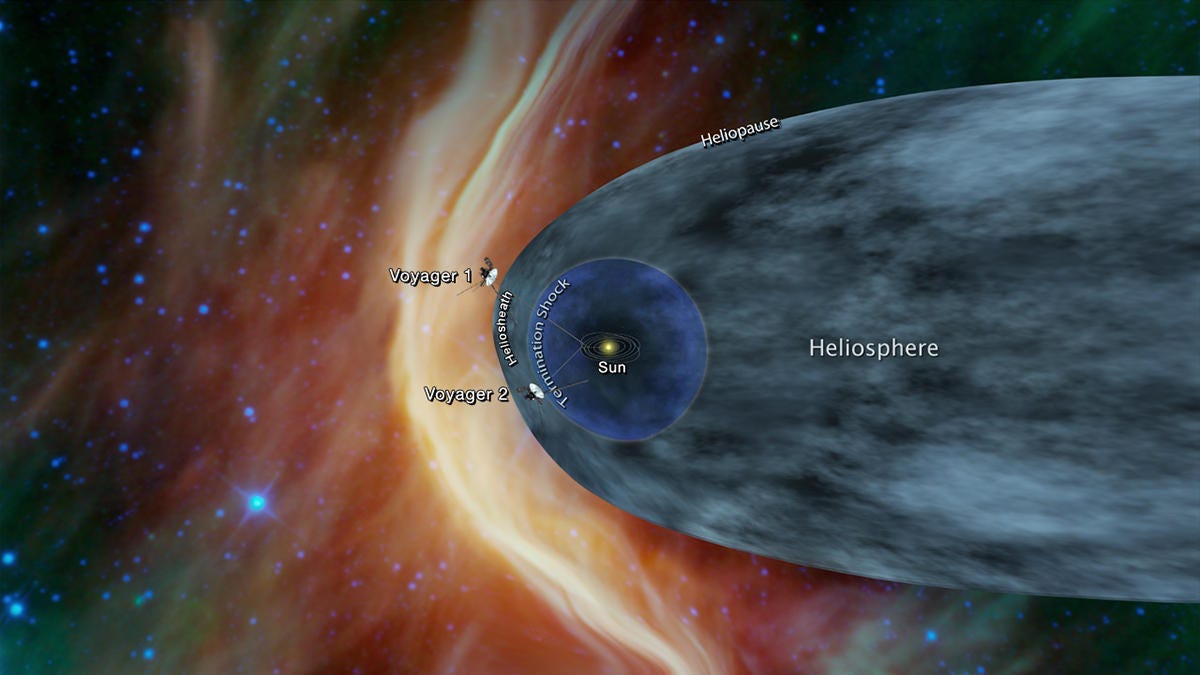NASA says Voyager 2 may be nearing interstellar space
Voyager 1 could soon welcome its twin to the space outside our solar system.
NASA's Voyager 2 spacecraft launched way back in 1977 when bell bottoms and disco were in style. All these decades later, the probe appears to be nearing a massive milestone: an entry into interstellar space.
Voyager 2 has been traveling through the heliosheath, the outermost layer of the heliosphere, for over a decade. NASA describes the heliosphere as a "vast bubble around the Sun and the planets dominated by solar material and magnetic fields."
This artist's concept shows Voyager 1 moving into interstellar space.
The probe is currently just under 11 billion miles (about 17.7 billion kilometers) from Earth.
NASA announced on Friday that data from Voyager 2 shows an increase in the rate of cosmic rays from outside our solar system hitting the probe. The agency's Voyager 1 spacecraft had a similar experience in 2012 shortly before leaving the solar system.
Voyager 1 is currently the only human-made object to enter interstellar space. NASA scientists aren't sure when Voyager 2 will join its twin by crossing the heliosphere boundary, an area known as the heliopause.
"We're going to learn a lot in the coming months, but we still don't know when we'll reach the heliopause. We're not there yet -- that's one thing I can say with confidence," says Voyager project scientist Ed Stone.
Voyager 2 is the only spacecraft to visit Uranus and Neptune. Its adventures in the outer solar system led to the discovery of new moons around the gas giant planets. Despite the age of the probe, NASA hopes to continue to collect data from it until at least 2025.


